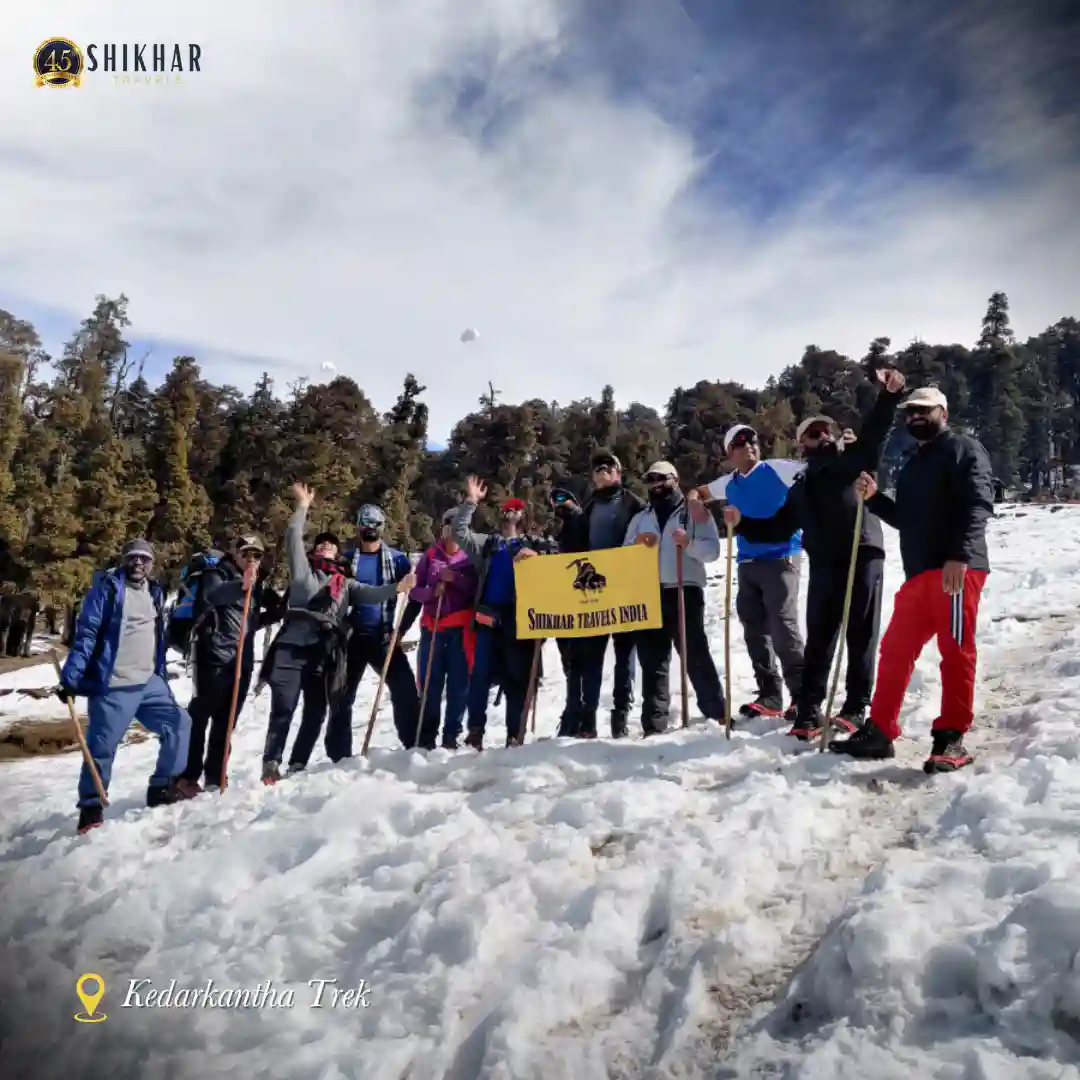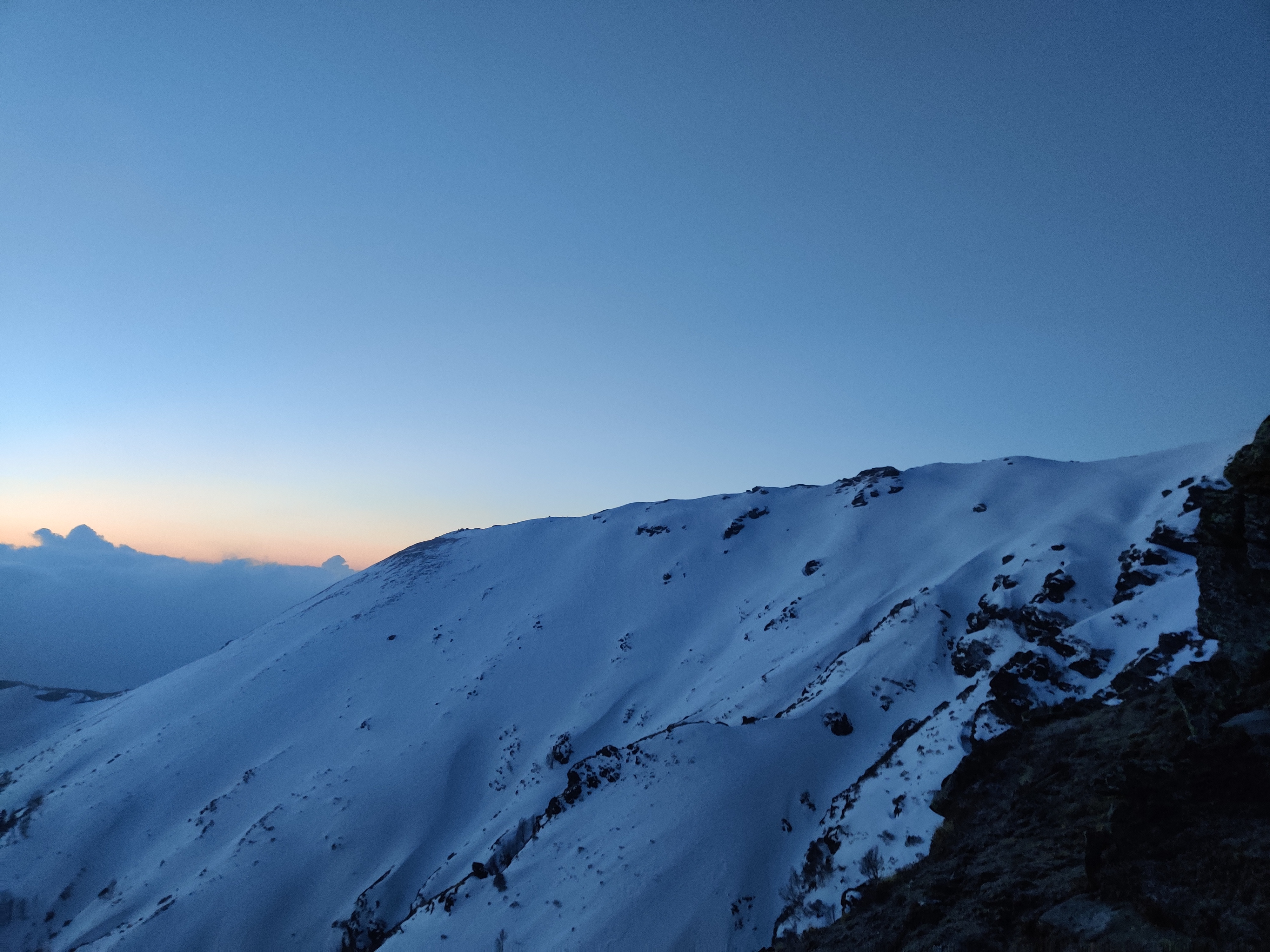Snowfall at Kedarkantha: When and How to Catch the Best Snowfall Experience
Kedarkantha, nestled in the Garhwal Himalayas, is one of the most sought-after winter trekking destinations in India. Known for its scenic beauty, panoramic mountain views, and snow-covered trails, it attracts trekkers from around the world. But if you’re dreaming of walking through pristine snow, timing your trek is essential.
In this blog, we’ll dive deep into the best time to visit Kedarkantha to witness snowfall, how to plan for it, and what to expect on this snowy adventure.
Contact us for Kedarkantha Trek Package
1. Best Time to Visit Kedarkantha for Snowfall
The prime season to experience snowfall in Kedarkantha is during the winter months, between December and February. Snow begins to fall as early as mid-December, transforming the landscape into a magical white wonderland, and the trails remain snow-laden through February. Here’s a breakdown of what to expect in each month:
- December: The onset of winter brings fresh snow to the Kedarkantha trail. By mid to late December, snow starts accumulating, and the forests and meadows get their first layers of powdery snow. This is an excellent time for those looking for fresh snowfall and moderate snow-covered paths.
- January: January is peak winter season, with the highest chances of heavy snowfall. The snow is deep, and the entire landscape is covered with thick blankets of snow, making it the ideal time for snow enthusiasts. However, the temperatures can drop to sub-zero levels, especially at night.
- February: As winter progresses, the snow remains thick on the trails. The days are slightly longer and warmer compared to January, but there’s still plenty of snow for trekkers. February is ideal for those looking for snow-covered trails without extreme winter conditions.
For the most consistent snowfall experience, late December through January is the best window. Trekkers during this period can enjoy a true winter trekking adventure with snowy trails, frozen lakes, and breathtaking views of snow-capped peaks.
2. Why Choose Winter for Kedarkantha Trek?
Winter adds a unique charm to the Kedarkantha Trek. The snow-laden forests, sparkling white meadows, and towering snowcapped peaks create a dreamlike atmosphere. Here’s why winter is the best season for Kedarkantha:
- Snow-Covered Trails: Experience the thrill of trekking through soft snow with the crunch under your boots as you ascend to the summit.
- Panoramic Views: The snow highlights the beauty of the surrounding peaks, including Swargarohini, Black Peak, and Bandarpoonch, making the views from the summit even more breathtaking.
- Less Crowded Trails: Though popular, the winter season sees fewer trekkers than summer, allowing for a more serene and personal experience.
- Starry Nights: The clear, cold winter nights offer some of the most spectacular views of the night sky, perfect for stargazing.
.
3. How to Plan Your Kedarkantha Snowfall Adventure
Though Kedarkantha is considered a beginner-friendly trek, trekking in winter snow can be more challenging. Prepare with cardio exercises and strength training a few months before the trek to ensure you’re in shape. Additionally, proper acclimatization is essential, so don’t rush your ascent. When planning your Kedarkantha trek for the best snowfall experience, here are key considerations:
a). Trek Duration
The Kedarkantha trek is typically a 6-day trek, including travel from Dehradun to Sankri (the base village). You’ll spend around 4 days on the actual trek. A sample itinerary might look like this:
Kedarkantha Trek Itinerary
-
- Day 1: Dehradun to Sankri
- Day 2: Sankri to Juda Ka Talab
- Day 3: Juda Ka Talab to Kedarkantha Base Camp
- Day 4: Kedarkantha Base Camp to Kedarkantha Summit and back to Base Camp
- Day 5: Kedarkantha Base Camp to Sankri
- Day 6: Sankri to Dehradun
b). What a Pack
Packing for a winter trek requires extra care. Here’s a list of essentials for the Kedarkantha trek in the snow:
-
- Layered clothing: Thermal wear, fleece jackets, and waterproof outerwear.
- Trekking boots: Waterproof boots with good insulation and grip for snow.
- Gloves and socks: Woolen and waterproof gloves, along with warm, high-quality socks.
- Gaiters and crampons: For added grip and protection while walking on snow.
- Sleeping bag: A sleeping bag rated for sub-zero temperatures is essential.
- Sunglasses and sunscreen: The snow can reflect sunlight intensely, making sun protection vital.
c). Acclimatization & Fitness
Though Kedarkantha is considered a beginner-friendly trek, trekking in winter snow can be more challenging. Prepare with cardio exercises and strength training a few months before the trek to ensure you’re in shape. Additionally, proper acclimatization is essential, so don’t rush your ascent.
4. What to Expect on the Kedarkantha Snowfall Trek
a). The Forests and Meadows
The trek begins with a scenic drive from Dehradun to Sankri. Once on the trail, you’ll pass through dense pine and oak forests blanketed in snow. The sight of tall trees covered in snow makes for a picturesque scene straight out of a winter fairy tale.
b). Juda Ka Talab
This frozen lake is one of the major highlights of the trek. In winter, the lake completely freezes, surrounded by snow-covered trees, creating a peaceful and tranquil atmosphere. It’s a perfect spot for your first camp and an introduction to the snow-filled adventure ahead.
C). The Kedarkantha Summit
The most anticipated part of the trek is the summit climb. The trail up to the summit is covered in deep snow, and the final ascent can be challenging, especially after fresh snowfall. However, the effort is worth it. Once at the top, you’ll be rewarded with panoramic views of the Himalayas, including Swargarohini, Bandarpoonch, and Black Peak, all glistening under the snow.
5. Safety Tips for Trekking in Snow
While snow makes the trek magical, it also brings certain challenges. Here are a few safety tips:
- Watch the Weather: Sudden snowstorms are possible, so keep an eye on the weather forecast.
- Stay Hydrated: Even in cold weather, it’s essential to drink plenty of water to prevent dehydration.
- Footing in Snow: Use trekking poles and crampons for stability, especially on slippery, icy patches.
- Pace Yourself: The cold and snow can make trekking harder, so take your time and don’t rush, particularly on steep sections.
Conclusion
The Kedarkantha trek in winter is a snow-lovers dream. If you’re looking to trek through fresh snow, experience pristine winter landscapes, and conquer a Himalayan peak, then Kedarkantha is the perfect destination. From mid-December to February, this trek offers a serene and thrilling adventure for trekkers of all levels. So pack your bags, embrace the snow, and get ready to witness the enchanting beauty of Kedarkantha in winter.
Are you ready for your snowy adventure? Let us know in the comments when you’re planning your Kedarkantha trek for snowfall!


Thank you so much for sharing this valuable information! I truly enjoyed reading your content. I also write about the Kedarkantha Trek for Trekos, and I hope you’ll enjoy reading my articles as well. The Kedarkantha Trek is such a fantastic experience, and it’s always great to see others share their insights on it. Looking forward to reading more of your posts!